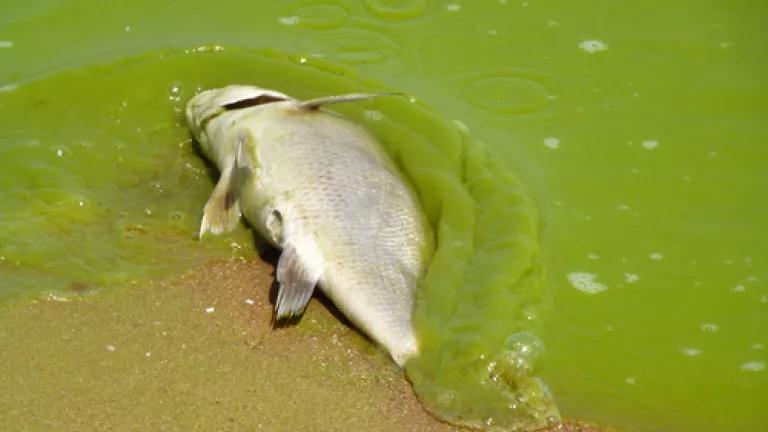Utterly non-surprising EPA Inspector General finding: EPA's weak half-measures on algae pollution aren't working

The Office of the Inspector General at EPA released a report last week concerning the Agency’s efforts to address the ugly mess of algae that’s choking the Mississippi River basin waterways and creating the enormous (as in, Connecticut-sized enormous) “dead zone” in the Gulf of Mexico. Basically, the audit says that that EPA’s tentative, voluntary half-measures to address the problem aren’t working.
Which should come as a surprise to absolutely no one; it certainly doesn’t to us. As we and many others have been saying til we’re nearly blue in the face – voluntary strategies just aren’t going to cut it. Not here, not with the sheer magnitude of our nation’s persistent green slime problem, and not when the stakes for public health are extraordinarily high, as the City of Toledo learned when an algae onslaught cut off its drinking water supply this summer. There’s no way around it: the fix requires hard numbers and concrete solutions with teeth. The only path forward is for EPA to overcome its quite strong aversion to taking meaningful action on this problem – an aversion that has led to not only the problem itself, but to EPA’s recent loss in our lawsuit over its refusal to even say one way or the other whether stronger medicine is necessary.
The EPA Inspector General, an independent office within EPA charged with auditing the Agency’s activities, was essentially providing a progress report on the strategy embodied in a 2011 EPA memo to states about the problem. The memo was largely a mishmash reiteration of the sorts of cooperative, collaborative, lets-all-hold-hands-and-sing-kumbaya approaches to trying to get states off the dime that the Agency has been trying for years. Of first order, the Inspector General found that EPA’s strategy, while it has encouraged sporadic efforts here and there, has so far produced little in the way of either concrete goals or monitoring to measure progress.
However, the report also hints pretty loudly that the real problem is states’ failure to take the one step that would really make a difference: establishing numeric criteria for nutrient pollution and algae. That is, setting numbers for the maximum concentration of these pollutants in a healthy stream, rather than generalized narrative prohibitions against too much algae. The 2011 EPA memo suggested that states should have made significant progress on getting that done within 3-5 years, but that hasn’t happened. The report says on this subject that states need “a uniform and comprehensive measurement and accountability system for setting goals and tracking progress,” which is pretty much another way of saying we’d better get some hard numbers in place pronto. And it’s increasingly clear that, for the most part, those numbers are not going to come from states. While states like Ohio that have felt the brunt of the algae problem in their drinking water supply are sounding pretty gung-ho for EPA to set numeric limits on algae toxins in the water supply, their enthusiasm doesn’t seem to extend to getting numeric limits on the pollution that’s causing that problem to begin with.
And we’re guessing that the Inspector General, like us, is getting pretty tired of hearing itself say We Told You So. Back in 2009, the Inspector General issued a report on the algae problem entitled “EPA Needs to Accelerate Adoption of Numeric Nutrient Water Quality Standards,” which concluded – well, what the title says. Specifically, that numeric criteria mark the beginning of any serious effort to address the nutrient pollution crisis, and that the Agency’s efforts to get states to develop those criteria had thus far been ineffective. The Inspector General was right then, and it’s still right. We will continue to push for EPA to toughen up and take real action to get numeric criteria in place. And we hope that instead of continuing to push back, the Agency will look long and hard at the report and rethink its approach.
Photo by Amy Goerwitz

